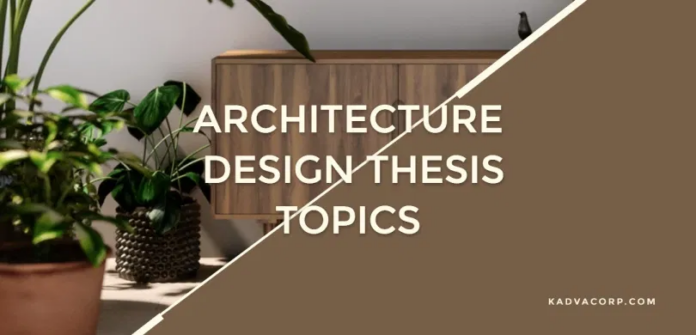Architecture may be defined as the design of individual structures, groupings of buildings, and frequently the space between buildings. However, the scope of architecture thesis topics extends well beyond merely creating designs. It requires creativity, imagination, organization of ideas, and clarity in communication. And also requires great interest in human behavior, our habitat, and the natural world.
Architects do research and develop concepts using the scientific method on a myriad of levels necessary to construct buildings. These levels entail comprehending the context of the area from environmental, historical, stylistic, and infrastructure perspectives; identifying program areas required by users, such as interior products, structure, mechanical, electrical, and plumbing.
What Effect Does Architecture Have on Society?
Architecture has served as a symbol of society throughout history, representing the ideals, triumphs, and final collapse of civilizations. You may learn a lot about the people who lived there long before our time, from the monumental structures to the homes and buildings that make up a city’s fabric.
The importance of architecture – The immediate pursuit of architecture thesis topics is to create the physical surroundings in which people live, but it also plays a momentous role in our society. Although the idea of shelter is rather straightforward, the initial architectural designs of structures were influenced by the local climate, the materials that were readily accessible, and the social mores of the people who constructed them.
Architecture is more than a building
Architecture has a powerful influence on its residents on a personal level in addition to society as a whole. Resident health, mindset, and productivity can all be influence by a variety of elements, including the space’s layout and material finishes. It has been display that those who work in well-design surroundings are more effective; more focuse, and generally add more weight to their organizations.
It is difficult to quantify the emotional impact that well-design architecture thesis topics has on people. But everyone has experience entering a space that just feels perfect. Designing for functionality is important, but it’s also necessary to draw on those feelings because they both relate to the sensation of experiencing architecture.
The characteristic of architectural style
Classic – Greek classical architecture was built during the 7th and 4th centuries BC. It is primarily known for its enormous, stone religious temples that were create using concepts of symmetry, order, and perspective. The Doric, Ionic, and Corinthian principles of the “architectural orders” are a significant aspect of its expressiveness.
Romanesque – This architectural style, which was create in Europe between the sixth and ninth centuries, has a strong connection to the period in which it was create. The structures, which drew their design inspiration from the Republic of Ancient Rome, were distinguish by thick, impenetrable walls and sparse apertures in semicircular arches during a time when European nations were at war and anxious about defending themselves against invasions.
Deconstructivism – Deconstruction is a literary and philosophical examination that challenges and destroys conventional ways of thinking. Constructivism is a Russian creative and architectural style from the early 20th century.
Postmodern – In both discourse and physical works, postmodern architecture investigates some of Modernism’s core ideas from a fresh historical and compositional vantage point.
Conclusion
The way people interact with one another, company productivity, community and neighborhood support, health improvement, and even crime reduction can all be significantly influence by architecture.

